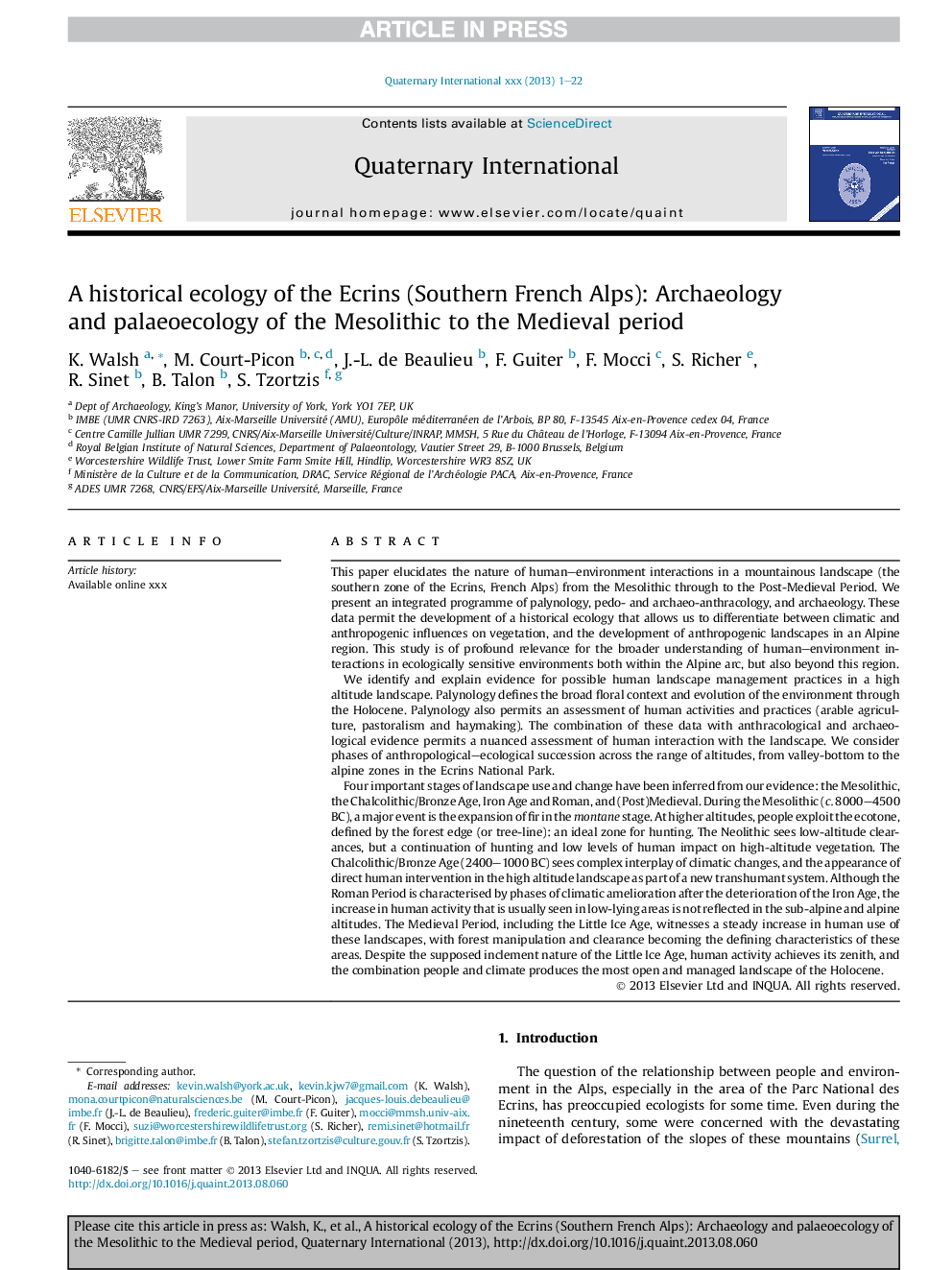| کد مقاله | کد نشریه | سال انتشار | مقاله انگلیسی | نسخه تمام متن |
|---|---|---|---|---|
| 7452027 | 1484143 | 2014 | 22 صفحه PDF | دانلود رایگان |
عنوان انگلیسی مقاله ISI
A historical ecology of the Ecrins (Southern French Alps): Archaeology and palaeoecology of the Mesolithic to the Medieval period
ترجمه فارسی عنوان
بومشناسی تاریخی اکرینها (آلپهای جنوبی فرانسه): باستانشناسی و پالئواکولوژی مسیحیت به دوره قرون وسطی
دانلود مقاله + سفارش ترجمه
دانلود مقاله ISI انگلیسی
رایگان برای ایرانیان
موضوعات مرتبط
مهندسی و علوم پایه
علوم زمین و سیارات
زمین شناسی
چکیده انگلیسی
Four important stages of landscape use and change have been inferred from our evidence: the Mesolithic, the Chalcolithic/Bronze Age, Iron Age and Roman, and (Post)Medieval. During the Mesolithic (c. 8000-4500 BC), a major event is the expansion of fir in the montane stage. At higher altitudes, people exploit the ecotone, defined by the forest edge (or tree-line): an ideal zone for hunting. The Neolithic sees low-altitude clearances, but a continuation of hunting and low levels of human impact on high-altitude vegetation. The Chalcolithic/Bronze Age (2400-1000 BC) sees complex interplay of climatic changes, and the appearance of direct human intervention in the high altitude landscape as part of a new transhumant system. Although the Roman Period is characterised by phases of climatic amelioration after the deterioration of the Iron Age, the increase in human activity that is usually seen in low-lying areas is not reflected in the sub-alpine and alpine altitudes. The Medieval Period, including the Little Ice Age, witnesses a steady increase in human use of these landscapes, with forest manipulation and clearance becoming the defining characteristics of these areas. Despite the supposed inclement nature of the Little Ice Age, human activity achieves its zenith, and the combination people and climate produces the most open and managed landscape of the Holocene.
ناشر
Database: Elsevier - ScienceDirect (ساینس دایرکت)
Journal: Quaternary International - Volume 353, 5 December 2014, Pages 52-73
Journal: Quaternary International - Volume 353, 5 December 2014, Pages 52-73
نویسندگان
K. Walsh, M. Court-Picon, J.-L. de Beaulieu, F. Guiter, F. Mocci, S. Richer, R. Sinet, B. Talon, S. Tzortzis,
